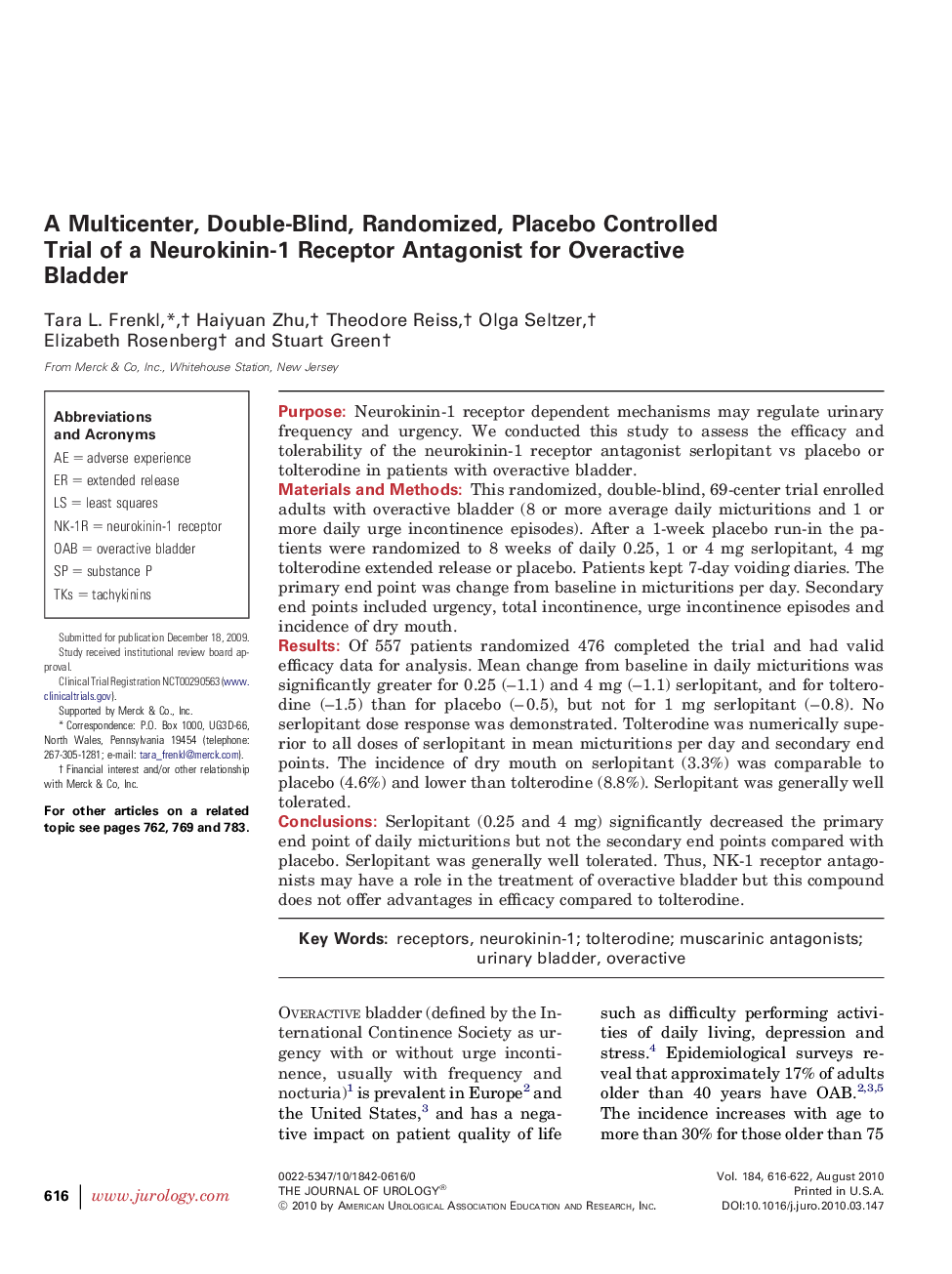| Article ID | Journal | Published Year | Pages | File Type |
|---|---|---|---|---|
| 3869454 | The Journal of Urology | 2010 | 7 Pages |
PurposeNeurokinin-1 receptor dependent mechanisms may regulate urinary frequency and urgency. We conducted this study to assess the efficacy and tolerability of the neurokinin-1 receptor antagonist serlopitant vs placebo or tolterodine in patients with overactive bladder.Materials and MethodsThis randomized, double-blind, 69-center trial enrolled adults with overactive bladder (8 or more average daily micturitions and 1 or more daily urge incontinence episodes). After a 1-week placebo run-in the patients were randomized to 8 weeks of daily 0.25, 1 or 4 mg serlopitant, 4 mg tolterodine extended release or placebo. Patients kept 7-day voiding diaries. The primary end point was change from baseline in micturitions per day. Secondary end points included urgency, total incontinence, urge incontinence episodes and incidence of dry mouth.ResultsOf 557 patients randomized 476 completed the trial and had valid efficacy data for analysis. Mean change from baseline in daily micturitions was significantly greater for 0.25 (–1.1) and 4 mg (–1.1) serlopitant, and for tolterodine (–1.5) than for placebo (–0.5), but not for 1 mg serlopitant (–0.8). No serlopitant dose response was demonstrated. Tolterodine was numerically superior to all doses of serlopitant in mean micturitions per day and secondary end points. The incidence of dry mouth on serlopitant (3.3%) was comparable to placebo (4.6%) and lower than tolterodine (8.8%). Serlopitant was generally well tolerated.ConclusionsSerlopitant (0.25 and 4 mg) significantly decreased the primary end point of daily micturitions but not the secondary end points compared with placebo. Serlopitant was generally well tolerated. Thus, NK-1 receptor antagonists may have a role in the treatment of overactive bladder but this compound does not offer advantages in efficacy compared to tolterodine.
